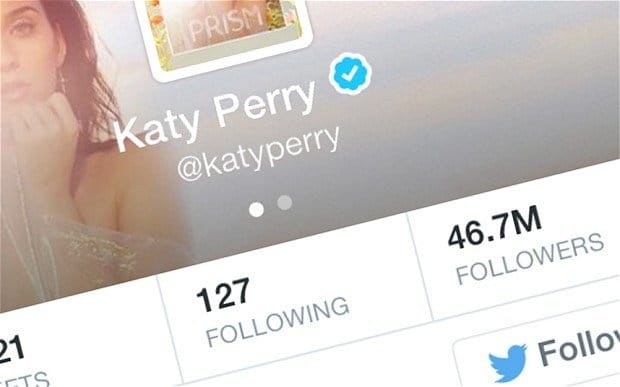 Written by ContentPowered.com
Written by ContentPowered.com
On Twitter, it seems like there’s little more than a bit of organized chaos behind the ratio of followers to followed accounts on any given account. Many people, subconsciously, assign values to various ratios of followers and followings, for better or for worse.
I like to think of the ratio as a spectrum, and I categorize it into five loosely defined segments. They are:
- Extreme Positive
- Positive
- Neutral
- Negative
- Extreme Negative
In this scale, “positive” means an account that has more followers than people it follows. For example, if @positive follows 100 accounts and has 1,000 followers, it’s a positive account. “Negative”, conversely, is an account that follows more accounts than follow it. For example, @negative follows 1,000 accounts but only has 100 followers.
Don’t make the mistake of thinking that positive and negative are quality judgments, however. A “negative” account can be valuable to watch, while a “positive” account can be valueless to you. It’s all about what you want to get out of the platform.
Extreme Positive and Positive
Both types of positive ratios are typical on Twitter these days, and are often considered ideal. Take a look at any incredibly popular Twitter influencer. Chances are, they have a few hundred or a few thousand followed accounts, while they can have thousands, hundreds of thousands or even millions of followers. The #1 most followed Twitter account, Katy Perry’s, has 66.7 million followers, and it follows only 164 accounts as of this writing. This is what I would consider an Extreme Positive ratio, and it’s very common among celebrities and businesses.
The reason for this is because celebrities and businesses tend to use Twitter as a one-way marketing tool. Sure, they’ll occasionally respond to tweets made by other celebrities or other businesses, as well as those made by fans, but it’s rarely due to the account being one they follow. Instead, it’s because of the use of a hashtag or a direction @mention.
Scale back on the follower levels, but keep the following levels low, and you have a more normalized positive ratio. This is where most normal users and mid-tier influencers reside. Small businesses and industry-specific popular people tend to have follower counts in the thousands, maybe the hundreds of thousands, but not in the millions. Meanwhile, they tend to follow more accounts.
The reason they follow more accounts can vary. Some use the feed as a way to keep in touch with people. Others have at some time or another implemented follow-back bots that follow anyone who follows them.
The issue with a positive ratio with a high volume of followed accounts is feed clutter. Twitter doesn’t filter the feed, and when you follow hundreds or thousands of accounts, you’re seeing a ton of information every day. If you follow 1,000 accounts, and each of them posts 3 times a day on average, that’s 3,000 messages you see. Or, rather, 3,000 messages from which you see a fraction each time you log on, depending on how long you spend going through your backlog.
Neutral
Neutral accounts, as you might have guessed, have as close to a 1 ratio as possible. One follower for every one account they follow. This tends to be the result of implementing a follow-back bot for much of the life of the account, following everyone who follows them. Additionally, a business or entity maintaining this ratio might do it by subsequently unfollowing people who unfollow them.
A neutral ratio isn’t very useful one way or the other. You still suffer from feed clutter, but you don’t have the followers necessary to simply ignore your feed.
The account on Twitter with the most followings is Arabic, specifically @ArabicBest. I don’t know the purpose of the account, but it actually has a closer to neutral ratio than you would expect from following 2.4 million accounts.
Negative and Extreme Negative
Negative ratios are the opposite of positive, when you start reaching a higher number of followed accounts than followers. This can happen for a few reasons. One reason might be a follow-back bot that is left unchecked, while numerous users continue to unfollow the business after getting their follow. Another possible cause is a temporarily inactive account. If you disappear for a year, you’ll lose a lot of followers, but you won’t lose the accounts you follow.
Extreme negative accounts take it to the opposite extreme and have an excessive number of accounts they follow, with virtually no followers to compensate. This is a hallmark of a Twitter bot created for the use of someone who sells followers. It’s virtually useless for a normal person to own such an account. Feed clutter makes the feed more or less valueless, while a lack of followers indicates either an inactive account or an account that doesn’t post anything of interest.
Does it Matter?
Your ratio matters, but perhaps not in the way you might think. Most casual users don’t use the ratio consciously to determine if they want to follow you. They might check your followers count, but they don’t care about your following number. They’ll check to see if you’re verified.
An extreme positive ratio is good, because it means you’re reaching an incredible number of people. It’s less a sign of the quality of your following number, and more to the popularity of your business. A regular positive ratio is just the way people expect Twitter to work. A neutral ratio is also fine.
A negative or extreme negative ratio, however, gets into dangerous territory. This typically is a fault with your content or marketing more than with your following number, though. Worry less about following too many people, and more about how to get and maintain legitimate followers.





Dan C.
says:Should I unfollow some people to lower my ratio? I’m pretty even at 1:1 right now